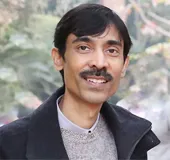
Globally, some city governments are trying hard to offer a good life to citizens. They realise that the well-being of communities is not only their fundamental duty but also an important requirement for building a strong nation. Their efforts are reflected in policies formulated for the upliftment of societies and in ensuring that all sections benefit from their actions.
The findings of studies conducted to assess people’s perception of living in cities are an indication of how city governments fare in responding to citizens’ concerns. Cities recording higher levels of citizen satisfaction also rank high on indices of happiness and liveability.
Examples of such people-centric approaches for improving living conditions are limited. Unfortunately, city governments in India are lagging behind. Here, deficiencies in preparedness and conduct of work are important reasons for prevalence of social and economic inequalities. Even the country’s capital, Delhi, does not fare well on many quality of life indicators.
The findings of studies conducted to assess people’s perception of living in cities are an indication of how city governments fare in responding to citizens’ concerns.
The many adversities in Indian cities call for major improvements in the way city governments work. To this end, a leading and inspiring role can be played by Delhi. The city has many advantages, in terms of knowledge, creativity, resources, and need of the hour is to judiciously utilise these assets.
Specifically, for addressing contemporary challenges of urbanisation and guiding future growth, Delhi has an upcoming opportunity to tap into—the fourth Master Plan for Delhi (MPD) for the period 2021-2041. The draft plan, prepared by Delhi Development Authority (DDA), has been in public domain since June 2021 for inviting public suggestions and objections. Upon finalisation, the plan proposals for improvement of various urban sectors and new developments will be implemented.
Considering the significance of master plans in shaping a city’s quality of life, it is an ideal time to ensure that the forthcoming plan successfully responds to various social, economic, and environmental problems grappling the national capital. A perusal of the draft plan and the progress with regard to its finalisation reveals a number of concerns.
The first issue pertains to timely implementation of the plan. Ideally, the draft plan should have been finalised and notified in 2021. However, there has been a delay. Non-availability of the plan implies delay in execution of projects by implementing agencies and mismanagement of urban growth. Previously, such delays have led to proliferation of slums and unauthorised colonies, as well as environmental degradation. Existing barriers in plan finalisation, such as obtaining approvals from various departments, timely revision of draft plan based on feedback, collating data, preparing cadastral maps, should be urgently addressed.
Considering the significance of master plans in shaping a city’s quality of life, it is an ideal time to ensure that the forthcoming plan successfully responds to various social, economic, and environmental problems grappling the national capital.
Secondly, people’s participation in preparation of the draft plan has been inadequate. Although, consultations have been held with diverse stakeholders, communities living in several informal and peripheral areas of the city are not aware of the plan. This implies that the draft plan is not inclusive. If problems faced by various sections of the society are not understood or considered, their requirements are unlikely to be met. Ideally, the reach of public consultation process should have been wider.
Thirdly, the draft plan is completely silent on the issue of finance, i.e., how much funds would be required to implement proposals, and how will these be mobilised by the already overburdened implementing agencies. Non-inclusion of financial details in previous master plans is an important reason for under-implementation. Many targets set for construction of houses, basic infrastructure and services, such as water and sanitation, could not be achieved. Some lessons can be learnt from smart city plans prepared for 100 cities. In addition to sectoral recommendations, these provide a financial plan. It is also interesting to note that none of the proposals in the draft plan are shown on maps. This deficiency can create problems for implementing agencies. Mapping precise locations of proposed activities, such as urban farming, green buffers, eco-sensitive zones, flood-prone areas, as well as planning strategies, is an important component of master plans.
Furthermore, the problem of informal growth and adverse conditions in Delhi’s peri-urban areas and census towns has been overlooked. These areas are undergoing a major transformation and are under tremendous stress due to the impact of urbanisation. This is observed from increasing population densities, changes in land use and occupational patterns, reduced farm lands, and haphazard growth of buildings. The changes are negatively impacting the lives and livelihood of the native population. With scarcity of land in most parts of Delhi, pressure on peri-urban areas will grow. Sub-plans exclusively for such areas are urgently needed.
Mapping precise locations of proposed activities, such as urban farming, green buffers, eco-sensitive zones, flood-prone areas, as well as planning strategies, is an important component of master plans.
Yet another worry amongst Delhiites is inferior air quality, which is affecting their health. The city government’s track record in minimising air pollution has been disappointing. It is strange that the sources of pollution are well known and so is the fact that the responsibility for managing the issue lies with different city government departments, and yet, the draft plan does not propose a multi-sectoral, or collaborative, planning strategy to overcome the problem.
By 2041, Delhi’s population will be in the range of 28-30 million. The forthcoming master plan offers an excellent opportunity to address their needs and concerns in a planned manner. Achievement of this goal requires preparation of a good plan and its effective implementation.
The views expressed above belong to the author(s). ORF research and analyses now available on Telegram! Click here to access our curated content — blogs, longforms and interviews.




 PREV
PREV


